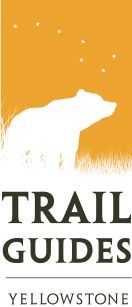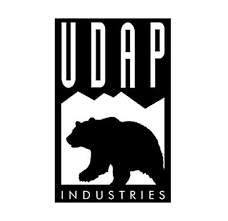Backpacking in Yellowstone
Beginner Backpacking Tips
Yellowstone Backpacking Tips 101
We've put together a few simple tips that will help you get started on your first backpacking adventure in Yellowstone. There are a number of special regulations that exist in Yellowstone and this overview will help you understand these rules and regulations so you can plan the perfect backcountry outing in America's first national park.
1. Do I need a permit to camp in the backcountry of Yellowstone?
Yes! Anyone planning to stay at a backcountry campsite within Yellowstone National Park is required to obtain a backcountry use permit. Backcountry permits are available year-round. You can make your reservations online at recreation.gov. Permits are not required for day hiking.
2. How do I choose a backcountry campsite?
There are just over 300 wilderness campsites located throughout the backcountry of Yellowstone and each campsite has a specific number (e.g. 2S1, 2S3, etc.). You can use the handy backcountry campsite locator found on the national park’s website to view the campsites for any given region. The map will provide you with the locations and the appropriate numbers for the campsites found along the trails. You will need these numbers in order to complete your backcountry use permit (see above). Always have a backup plan ready just in case your first choice is unavailable.
3. Bear spray. Do I really need it?
We highly recommend it. Bear spray has proven to be highly effective in cases where it was used properly. Following the basic rules listed below when hiking or backpacking in Yellowstone will greatly reduce your chances of a bear encounter and your need to use bear spray. Remember, carrying bear spray does not automatically guarantee your safety.
- Make noise while hiking. Clap, shout or sing.
- If approached by a bear DO NOT RUN - bears may interpret you as prey if you run.
- Never approach a female bear with cubs for any reason.
- Do not hike after dark.
- Watch for signs of animals including tracks and scat.
- Carry bear spray and know how and when to use it.
- Avoid animal carcasses. Bears may be feeding or resting nearby.
Click to learn more about bear spray and how to travel safely in bear country.
4. Should I rent, buy or borrow equipment?
There are some essential items you'll need before your backpacking trip in Yellowstone (see the list below). You may want to rent or borrow equipment if you're new to backpacking. Regardless of whether you rent, buy or borrow, it's important to be properly fitted with the right equipment to avoid any unnecessary discomfort and/or even injury while backpacking. Stop in at your local gear shop for advice, and ask if they rent gear. You may be able to try a piece of equipment before you make the investment for yourself.
5. What should I carry in my pack?
We recommend that you become familiar with your camping equipment before you set foot in the backcountry. Practice setting up your tent in the backyard. Make sure you know how to use your camp stove and how to filter water properly. Break in new shoes and boots before any trip and never hike in a brand new pair of hiking boots. Carry freeze-dried food until you are comfortable cooking more elaborate meals. Freeze-dried meals are convenient, require very little clean up and are lightweight. This basic pre-hike preparation can mean the difference between a memorable trip and one that you'll remember for all the wrong reasons.
Recommended items for an overnight backcountry stay in Yellowstone
- 2 or 3-season tent
- Sleeping bag rated to 20 to 30 ºF
- Sleeping pad/air mattress
- Cook stove and fuel
- Cookware and utensils
- Plastic bags for packing out your trash
- Backpack (properly fitted)
- Rain jacket and/or rain pants
- Matches, lighter and fire starter (check if campfires are allowed)
- Extra socks and clothing appropriate for the time of year
- Headlamp or flashlight and extra batteries
- Food - snacks, energy bars, trail mix, freeze-dried meals
- Sturdy boots/footwear
- Sandals for stream crossings
- 50' of nylon rope (4 mm) or Dyneema® cord to hang your food and 2 carabiners
- Stuff sack for holding food, trash and toiletries (lined with a garbage bag)
- Water filter and water bottles
- Warm clothes (lightweight down or fleece jacket, gloves and winter hat)
- Toilet paper (biodegradable)
- Bear spray (especially in Yellowstone)
- Basic first-aid kit
- Map and compass (know how to use them)
- Whistle (used for signaling in emergencies)
- Pocket knife
Click here to download the Trail Guides Yellowstone backpacking checklist.
6. What is a food storage pole?
A food storage pole allows you to hang your food and other gear up off the ground and away from animals. It is usually suspended horizontally between two trees near the cooking area of each backcountry campsite, and is located approximately 12 to 15 ft. above the ground. You should carry at least 50' of nylon cord (4mm), a bear bag as well as a carabiner or two to help you hang your food. Some campsites even have metal food storage boxes which allow you to stow your food and cooking items safely in these heavy-duty steel containers. It's often a good idea to hang or secure your food before you set up camp so there are no surprises when you return to the cooking area. Smaller animals will also look for food in and around any unattended gear. Keep all food, trash and toiletries stored safely in the backcountry.
7. Is the water safe to drink?
No. You should never drink untreated water directly from any lake, river or thermal area no matter how clean the water may appear. Parasites, viruses and other bacteria live in these waters and unless they are properly treated they can cause some very unpleasant side effects.
8. Getting in shape
Much of Yellowstone is located above 6,000 ft. and preparing your body for any physical exertion at this altitude will not only help prevent injury, but it will allow you to enjoy the backcountry experience more thoroughly. If you are unaccustomed to carrying a backpack it's important to spend a little time preparing your body for the physical efforts that lie ahead. Hiking, biking and running are great for general conditioning and a simple weight lifting regime started a few months before the trip can strengthen your arms, back and shoulders. Consider working your core muscles. This will help with balance and protects your back from possible injury. Take day hikes with about half the weight you plan to carry in your backpack. This will help your body get accustomed to the extra weight you'll be carrying on the trail.
9. Can I swim in the hot springs and thermal features?
Yes and no. Many hot springs and thermal areas are off-limits to swimming or bathing and are marked with warning signs. In the backcountry this is not always the case. If you are unfamiliar with an area ALWAYS ask the park rangers about any thermal features you may encounter along your planned route and whether they are safe to swim in.
10. When is the best time to visit Yellowstone?
The month of May can be a very enjoyable time in the park but expect cooler temperatures during the day (50-60ºF) and at night (30-40ºF). The chance for rain and snow is always a possibility but you can experience snow at higher elevations throughout the summer. Be prepared for any type of weather. The bugs are nonexistent in May but keep an eye out for ticks.
June sees warmer daytime temperatures (60-70ºF) but the mosquitoes and flies can be bothersome. Pack head nets and/or bug repellant and enjoy the warmer days. At night you may see temperatures in the 30-40ºF range.
In July things tend to warm up considerably (80-90ºF) and the weather pattern becomes a bit more stable. Afternoon thunderstorms are always something to consider, especially at higher elevations. Nighttime temps may be in the 40-50ºF range.
August is similar to July with warmer daytime temperatures (80-90ºF) and the possibility of afternoon thundershowers. Temperatures can still drop into the 30's-40's ºF at night. Bugs are less of a problem but it all depends on where you are planning to visit.
September and October can be absolutely beautiful but winter can settle in at any time. If you plan to visit during these two months it's best to wait until you arrive in the park and then make your backcountry plans based on the short range forecast. Temperatures during the day may be in the 50-70ºF range and nighttime temperatures can drop into the 30'sºF or lower.
11. Hiking during fire season
Warmer and drier conditions during the summers are becoming the norm throughout the west and the fire season in Yellowstone can begin as early as June and may last through September. The following is the Wildland Fire Program in Yellowstone National Park. It provides a little insight as to why most fires are left to take their natural course.
- The park service will suppress wildfires that are human-caused or that threaten people, property or resource values.
- To ensure that naturally ignited wildland fires may burn freely as part of an ecosystem process.
This means you may experience hazy and/or smokey conditions during your visit. Hiking trails may be closed without notice if a fire poses a threat to people or property. Plan ahead and have a list of alternate hikes just in case your first choice is unavailable.
Important Phone Numbers & Links
Information: +1-307-344-7381
TTY: +1-307-344-2386
Road Updates: +1-307-344-2117
Sign up to receive Yellowstone road alerts on your mobile phone by texting "82190" to 888-777
Xanterra Parks & Resorts: +1-866-439-7375 or www.YellowstoneNationalParkLodges.com
NOAA Weather Link (Old Faithful Area)
Central Backcountry Office: +1-307-344-2160
Yell_Backcountry_Office@nps.gov
Outdoor Brands We Trust
Choosing the right equipment for your outdoor adventures is one of the most fundamental aspects of any backcountry outing and it's often the most difficult thing to get right. It's important to match the right gear with the right activity so you're properly equipped when you head into the backcountry. Potential problems with equipment, clothing or footwear usually don't surface until you're miles from the trailhead so it's important to spend a little extra time researching what's available. Online reviews can be very helpful but keep in mind that everyone is unique, and certain equipment like hiking boots, backpacks and clothing may not provide the same level of comfort or fit. Always test your gear at home before venturing into the backcountry. This is especially true for camp stoves, navigational apps, water filters and tents. Understanding your equipment and how to use it properly can mean the difference between a comfortable backpacking trip and one you'll remember for all the wrong reasons.
The brands listed below are companies we know and trust. We use their gear everyday and can attest to the quality and attention to detail they build into each of their outdoor products. If you have any questions regarding the equipment you’ll be using on your guided trip, or if you just need a recommendation before your own personal backpacking adventure, feel free to contact us beforehand. We are true “gear heads” and love sharing our knowledge and expertise.










